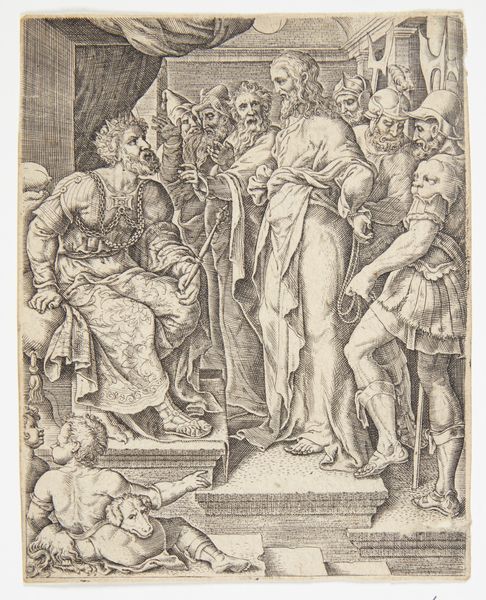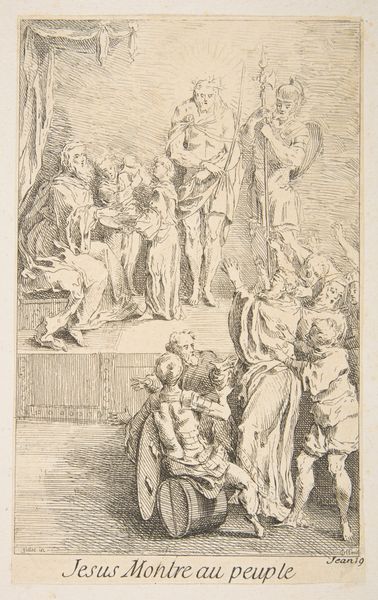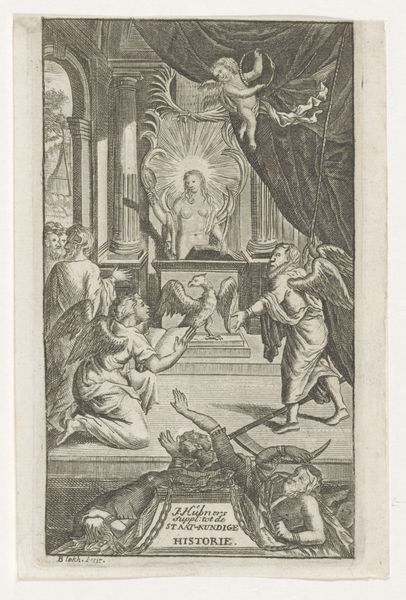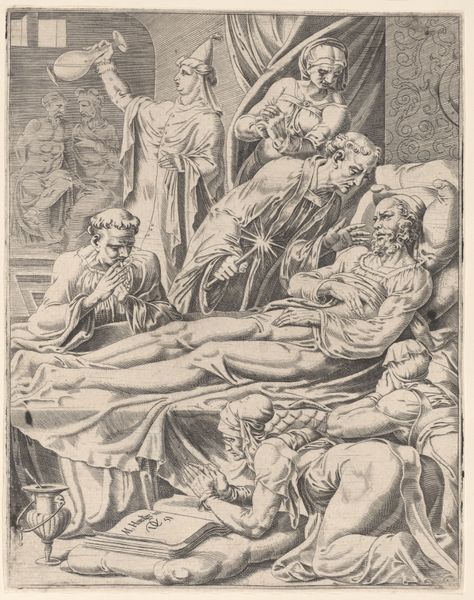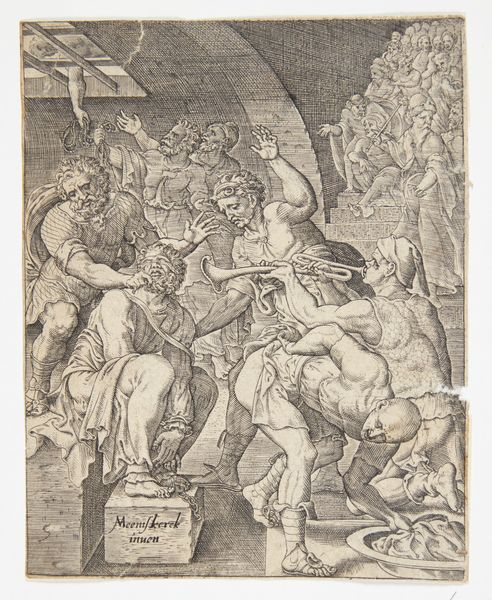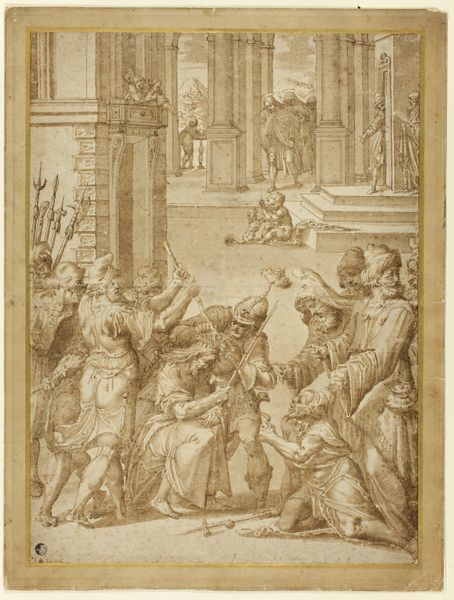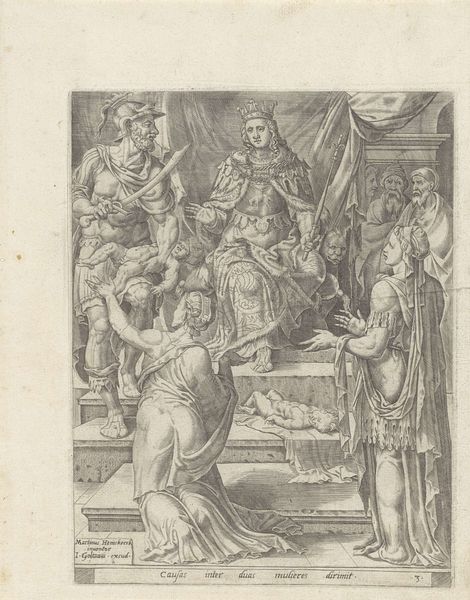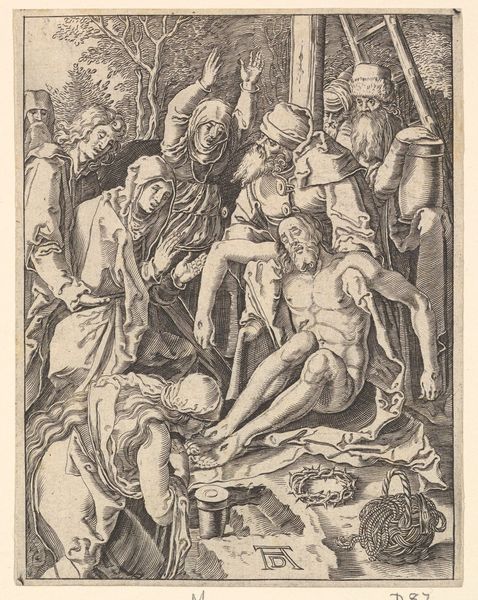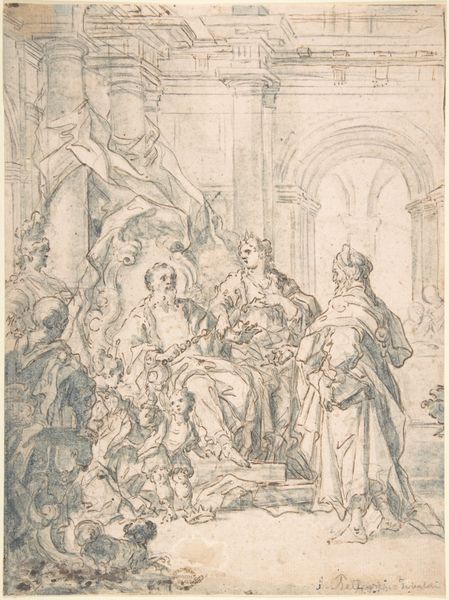
print, etching, engraving
# print
#
etching
#
figuration
#
11_renaissance
#
history-painting
#
academic-art
#
engraving
Dimensions: 115 mm (height) x 92 mm (width) (bladmaal)
Curator: This is a print titled "Jesus for Kajfas," created in 1568. It’s an etching, an engraving to be exact. Editor: My immediate feeling is of intense, almost brutal, injustice. The figures seem trapped within a rigid hierarchy. Curator: This piece, from the Renaissance period, depicts a key biblical scene. Consider the production involved. The engraver's skill transforming a metal plate through laborious work, acid etching the lines that make the image, finally transferred to paper and endlessly reproducible. What power dynamics are at play there? Editor: The central figures resonate strongly. The bound Jesus contrasts so starkly with the imposing figure of Kajfas on his throne. The artist uses a pyramidal composition to draw your eye, emphasizing the seated high priest and subtly hinting at his symbolic authority and cold power. I can feel how it communicates both human frailty and strength of religious belief. Curator: Precisely, religious belief deeply connected to that era's power structures. The medium facilitates wide distribution. It makes me wonder how these accessible images were used by diverse social classes, to reify faith or question existing institutions. Editor: Absolutely, there's the helmeted soldiers hauling Jesus; their musculature conveys sheer physical force, contrasting starkly with Jesus's exposed, vulnerable body. He's being brought to the high priest. What does it say about legal procedure at that time? Or maybe about the representation of law? Curator: Also, this kind of academic-art print challenges our idea of originality and craft by asking, "What is it?" A unique piece, or part of a larger series to reach far and wide audiences, even centuries after. It's fascinating that in principle the making process is now as readily available as the reproduction of the very etching. Editor: Seeing Jesus, not as the conquering hero, but subjugated, accused – it really challenges that common idea of him. Thank you, seeing the image through the context in its making really highlights how this humble piece of paper can hold so many layers. Curator: Yes, reflecting on both technique and content allows this engraving to engage viewers across the boundaries of its original place and time.
Comments
No comments
Be the first to comment and join the conversation on the ultimate creative platform.

